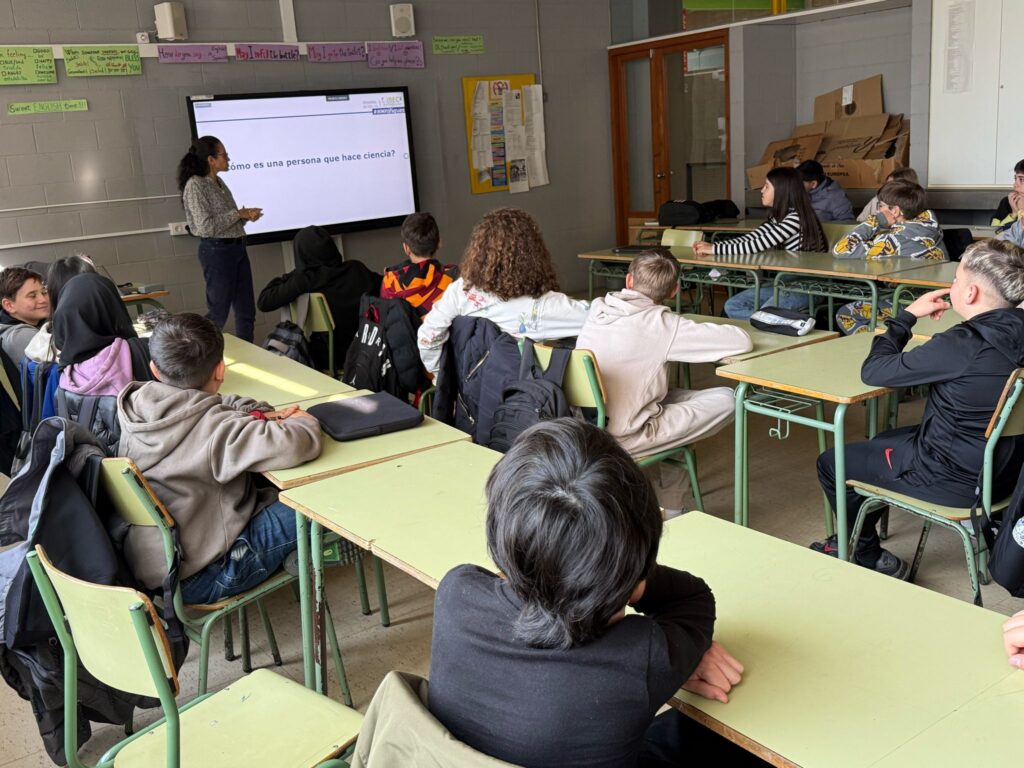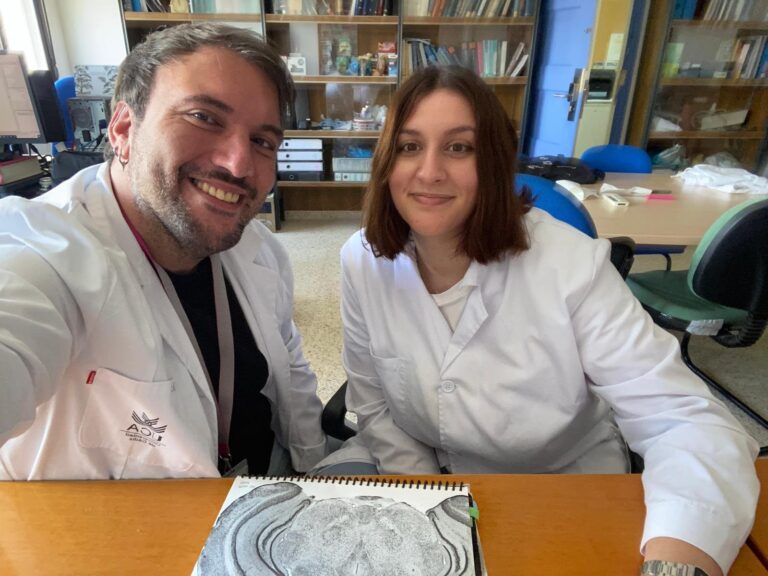On 14 February, Bia Moreno, the communication officer for PHOTOTHERAPORT at the Institute of Bioengineering of Catalonia (IBEC), visited a school near Barcelona. She talked about the project, her previous career in science, and, most importantly, showed that science is not just for men!

Since its official declaration by the United Nations General Assembly in 2015, 11 February has been observed worldwide as the International Day of Women and Girls in Science. This annual commemoration promotes full and equal access to, and participation in, science for women and girls. It represents a global commitment to overcoming gender stereotypes and the structural barriers that have historically limited women’s and girls’ involvement in science.
Through a variety of initiatives and events, the day aims to empower women and girls, encourage their continued involvement in scientific activities, and promote gender equality more broadly. By promoting inclusive and equitable opportunities within the scientific community, the day highlights the importance of diversity and representation in science, technology, engineering and mathematics (STEM).
In this context, Bia Moreno, communication officer of PHOTOTHERAPORT project at the Institute of Bioengineering of Catalonia (IBEC)in Barcelona, took part in the 10th International Day of Women and Girls in Science. She participated in the annual event 100tifiques, organized by the Catalan Foundation for Research and Innovation (FCRI) and the Barcelona Institute of Science and Technology (BIST). This initiative aims to bring science closer to schools and celebrate female scientific talent.
The activity began with a talk to 29 students aged 12–13 from the INS Manuel Vázquez Montalbán in Sant Adrià de Besòs. During the talk, Bia explained the science behind PHOTOTERAPORT and introduced the students to light-emitting implants, photoswitchable drugs, and the scientific method. Bia also shared her journey to becoming a scientist with them, focusing on what motivated her to study biology and pursue a research career in molecular biology, and subsequently in science communication.
The talk raised awareness of the day-to-day life of a scientist and emphasised that they are ordinary people who have families and hobbies, and that they can be women too! The aim was to break the stereotype of a lonely old man with crazy grey hair working alone in a laboratory. The students were very interested and motivated, and took the opportunity to talk to Bia not only about science, but also about being a female scientist. After the talk, the students became scientists for a moment and took part in a hands-on activity in which they observed their own buccal cells under a microscope after staining them with methylene blue.
Activities like this play an important role in normalising the presence of women in scientific fields and passing on the message that girls have the same capabilities as boys and can also be brilliant scientists. Hopefully, PHOTOTHERAPORT will return next year to inspire even more girls to pursue science!



